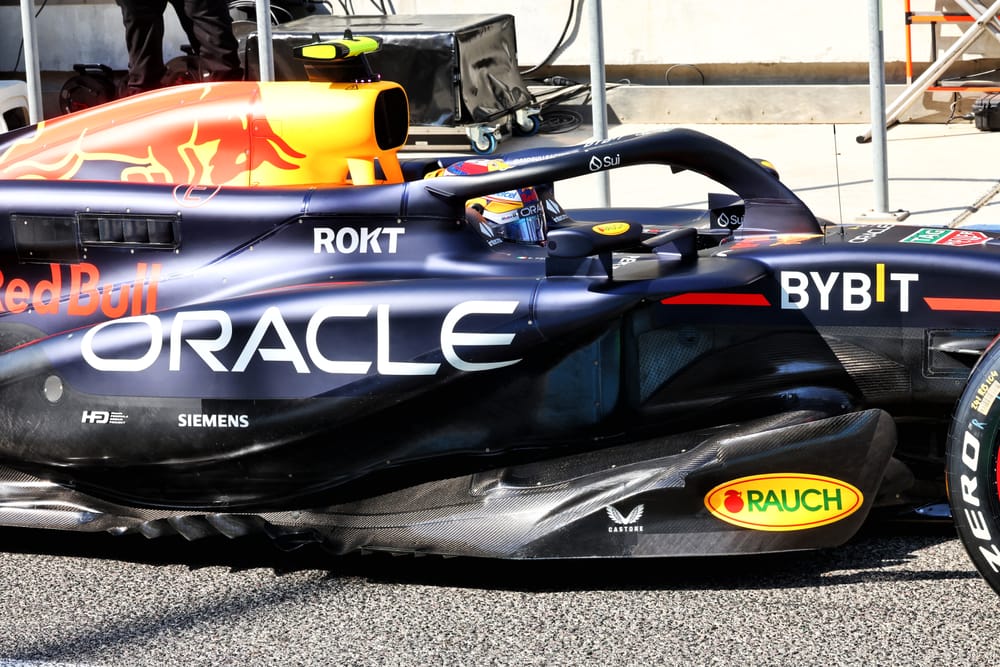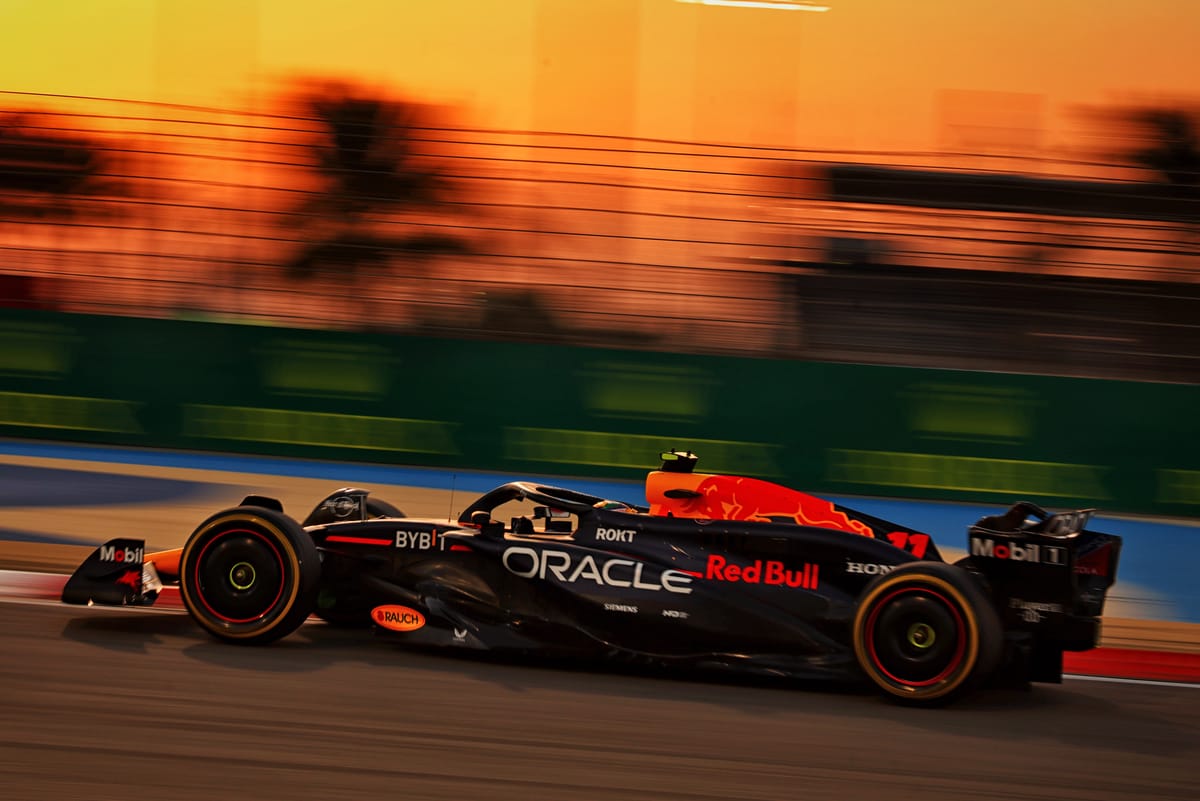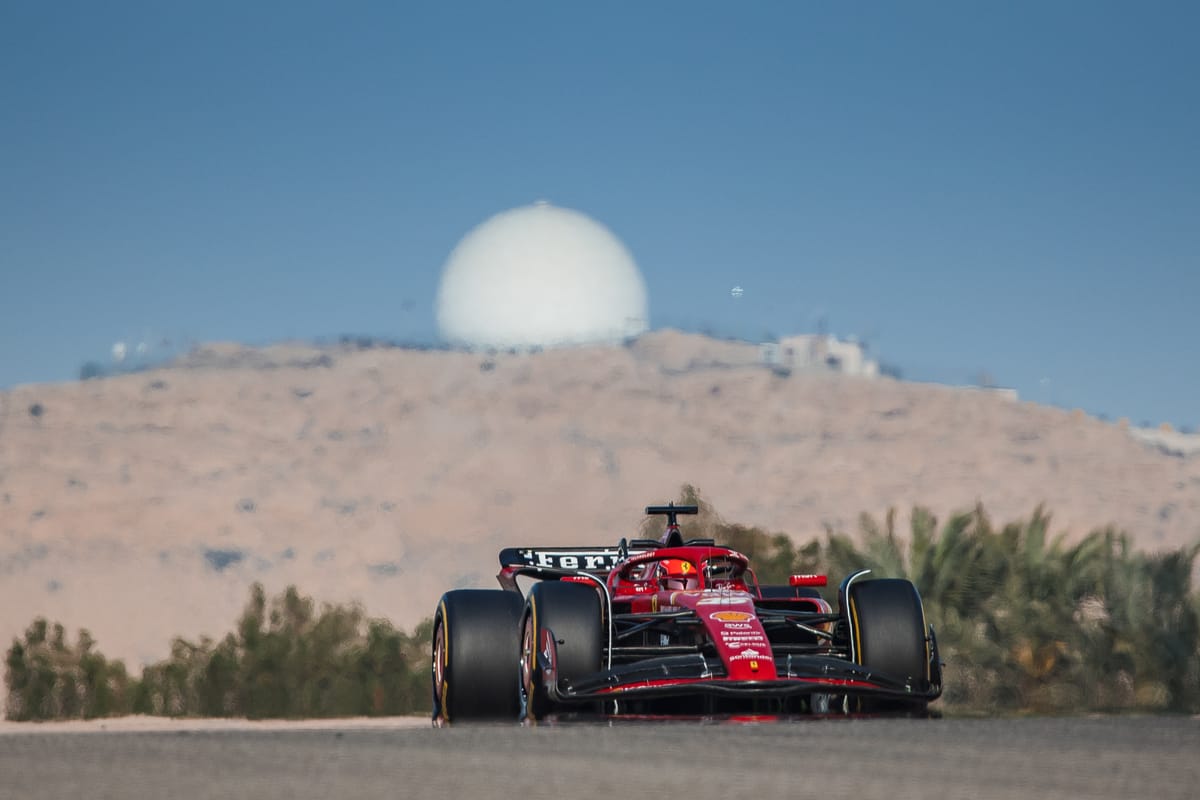Up Next

Red Bull’s visually different 2024 Formula 1 car is an aggressive and potentially unfinished evolution that is undersold by comparisons to previous designs abandoned by Mercedes.
The work done on the RB20 has caught the eye of everybody in F1 and surprised several rivals as well as drivers within the Red Bull family.
And that’s just what is visible, with a completely different sidepod interpretation and Mercedes-esque cannons atop the engine cover, not whatever has been further refined under the surface.

As Daniel Ricciardo observed during pre-season testing while laughing: “I'm surprised, but I'm not. Because it's a team that operates at its best when they're winning.
“And when they're winning, they want to just completely...yeah, crush the competition.
“I feel like they've had the most kind of updates of anyone. That's really saying something.”
Where Red Bull's ideas originated from almost doesn't matter. One of the primary philosophies at the top of the Red Bull technical department is that an idea's parentage does not define its performance potential.
Essentially, it means others could copy Red Bull’s ideas and do a better job, but at the same time Red Bull could take inspiration from elsewhere and do a better job too.
That fuelled motivation to do more than just gently evolve this car, as Red Bull is known to believe that if it had done that, it risked others catching up.
Then the technical team’s strong comprehension of this ruleset, and class-leading accuracy of its development tools, meant it could allow itself the risk of going in a new, aggressive direction with the confidence it would work.
But that goes well beyond the visual similarities the car shares (and does not share) with past Mercedes designs of this rules era.

There has been a lot of excitement since the RB20 was launched that the car bears some resemblance to the last Mercedes (even though in reality it is only minor) and that it may even get an upgrade that comes closer to the so-called Mercedes zero-pod.
It is true that Red Bull is not just going to stop here with its launch car. The RB20 will be upgraded and could potentially look different to what we have seen now.
But the changes made already from 2023 are extensive and these changes are what will be driving the car’s performance, more than what the engine cover reminds people of and how much the sidepods may or may not change from here.
As we have seen from images with the Red Bull bodywork removed, the internals of this car are significant and very complex. Shrinking all that further or relocating it would take an enormous upgrade beyond what is clearly already a significant redesign.

Even Jody Egginton, technical director of the sister RB team, was impressed by the packaging of the Red Bull – so if it catches the eyes of someone working with the same engine, that’s telling.
The key question is why it’s been done in this way. The sidepods will be a consequence of Red Bull’s philosophy for this car, not the starting point.
In simple terms, Red Bull wants to make the front-end as responsive as possible without that momentum causing the rear to slide too much. That is tricky to do with these cars, which have a rearward centre of aerodynamic pressure and are weighted heavily towards the rear too.
But weight distribution does not just apply front to back – there’s also a benefit to keeping things closer to the car’s centreline, if you think about the car in 3D.

So, one theory is that Red Bull has brought more of the car’s internal architecture inboard as possible, while also trying to keep the centre of gravity low – hence the repackaging of the radiators in the sidepods and the cooling arrangement added more centrally behind the airbox at the top of the engine cover.
This might lower the car’s polar moment of inertia, which is effectively its resistance to turning, and make the car more responsive on turn in. If this is Red Bull’s intent, the thought of ‘what should the sidepods look like?’ only comes after.
It’s not necessarily as simple as trying to make the radiators in the sidepods as small as possible just because Red Bull wants the bodywork shrinkwrapped, although no doubt Red Bull has also seen an aerodynamic opportunity there and has capitalised on the opportunity presented by the new internals.
It may be that there is room to be even more aggressive. That is where a bodywork update that shrinks the sidepods further could come in. But they will most likely still be sidepods.
Seeing the car more clearly at testing helped to really understand and appreciate the detail and effort that has gone into redesigning key parts already and, by extension, showed making a further major change from here would be immensely difficult if not impossible.
This is a car with an awesome amount of detail on it, underpinned by some fundamental choices that make Mercedes comparisons a red herring.

The key architectural decisions like the upper side impact structure and the cockpit position are different. There is some resemblance with the vertical sidepod inlet but the RB20 takes this further and the extended top surface, with the narrow horizontal inlet behind it, is clearly different. And what follows is very obviously a sidepod, one being used for cooling and aerodynamic purposes.
At most what Red Bull has resembles a hybrid of what Mercedes had before and after its in-season upgrade last year. But limiting what Red Bull has done to such comparisons does its own ideas a disservice.
The most significant changes have already been committed to - and whatever the exact inspiration or intent, this risky revolution seems to have immediately worked.






